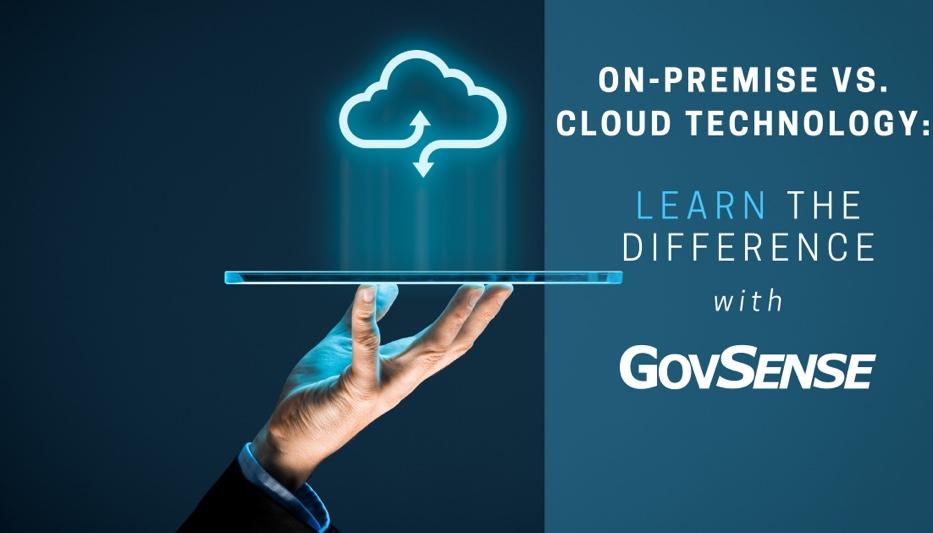On-Premise vs. Cloud Technology – What’s the Difference?

Cloud technology. You know it, you use it, at least in your personal life, but do you know what “the cloud” entails? Here is a more difficult question. Have you heard of on-premise technology? Unless you live and breathe IT infrastructure, probably not, but just the term, you do know on-premise technology.
On-premise technology, or as they like to call it in the IT world, “on-prem” essentially means precisely that, on-premise or technology that resides within an organization’s establishment. Installing technology on-premise means deploying software or technology within your establishment’s confines and directly onto the users’ computer via discs or USB. By implementing technology on-premise, it allows IT staff direct access to the data to configure and control. On-premise is typically a more traditional route to implementation and might require a software license for each user to get and keep the ball rolling.
Cloud technology is not entirely simple to explain but is simple to implement because it all happens over the internet through a third party. Cloud technology involves delivering software, servers, storage, databases, analytics, intelligence, and more through the internet. The cloud offers more flexibility and provides some additional modernization sought after by a lot of companies today.
Both options come with significant benefits, but neither come without disadvantages.
On-premise access benefits are that it can be accessed without an internet connection and allows multiple users to be present on the system without affecting the speed. But this means that “on-the-go” is not an option because the system can only be accessed within the vicinity of the building and remote access is often a complex process. On-premise implementation allows complete control and management of assets by users. This can be particularly beneficial for highly regulated industries where privacy is a key concern. The downside to this implementation is that a dedicated IT support team is needed – making it a little more costly to maintain.
When it comes to accessibility and cloud technology, users can access the system and their data anywhere – this makes the “on-the-go” aspect possible and provides an added convenience factor. Cloud is the best solution for withstanding unexpected occurrences that may prevent employees from being on-site to work. The cloud’s disadvantage is that internet access is required, so users who do not have the most reliable internet connection might suffer the consequences. An influx of users could cause the speed to slow down if the cloud system is used simultaneously.
Management of cloud technology allows vendors to perform software updates and back-ups, so a dedicated IT team is not needed, which can be cost-effective. However, there are a few instances where users cannot access certain assets due to encryption keys owned by a third-party.
The decision is entirely up to the organization’s discretion, but it is important to remember that cloud technology is becoming increasingly popular amongst businesses of all sizes. Eventually, the progressive transition will make it almost impossible to keep outdated on-premise software as part of an organization.. Some of the most successful companies are using the cloud and are saving thousands of dollars by cutting energy costs and unnecessary equipment accompanied by on-premise software. There are measures to keep data highly secure and being productive practically anywhere is crucial for times like now..
It is not clear when cloud technology will completely take over for on-premise software, but organizations should be prepared to make those adjustments sooner than later.
GovSense is the first complete cloud solution purpose-built for local governments, empowering over 60 communities and supporting more than 2 million citizens. Govsense built on Oracle NetSuite—the #1 true cloud ERP platform with over 50,000 customers worldwide— GovSense delivers a modern, unified system that streamlines operations, enhances transparency, and drives efficiency. GovSense’s team has been implementing cloud solutions since 2005, bringing over two decades of expertise in delivering scalable and secure technology for local agencies. As a five-time GovTech 100 recipient, we are recognized as an industry leader in transforming government technology. GovSense is one modern platform that has everything you need for your local government, ensuring your community is equipped with the tools to thrive in the digital age.
